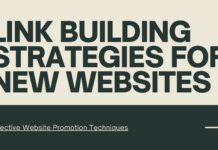Interested in learning SEO?
Although search engine optimization (SEO) isn’t an easy task, learning SEO doesn’t have to be expensive or daunting. Based on the SEO of your site, you can enter your URL here to learn what to focus on first.
It takes simple steps to navigate the standards of Google, Yahoo, and Bing before you’re considered an expert.
You can learn the importance of SEO principles in this SEO boot camp and gain useful resources for later. Find out how to learn SEO in six simple steps, or contact us online to speak with an SEO expert.
IF YOU HAVE ANY QUESTIONS, for seo courses online PLEASE DO NOT HESITATE TO CALL OR EMAIL US
admin@crystalxone.com
0092-3338272239.
1. Understand the goal of SEO
SEO serves the general purpose of increasing revenue, regardless of the marketing goals of each business.
Search engine optimization helps you rank on search engine result pages (SERPs), generating traffic that generates revenue.
A comprehensive understanding of search engines is necessary before that sinks in.
Search engines such as Google and Bing use “spiders” or “bots” to collect and index information about websites. Search engines display relevant websites when a user enters a search term.
To begin with, you should make sure search engines can find your site. By using Google’s URL Inspection Tool or Bing’s Webmaster Tools, you can ask Google and Bing to index your URL.
2. Master keyword research
To rank for words – aka keywords – you need to do research. Using keywords that people frequently search for and that are relevant to your business will help you reach a larger audience.
Generally, keywords are classified as long-tail or short-tail depending on how many words they include. Your pages will be more effective if you use long-tail keywords.
People are more likely to be satisfied when they search “where to buy magazines,” rather than “magazines.”
Where can you find out what your industry’s top searches are?
Best learning SEO involves using keyword tools like Keyword planner, and keyword tools.
You will weave keywords into your content, titles, meta descriptions, and URLs to optimize your search results. The first step in your SEO journey is to become familiar with keyword research.
3. Know the difference between on-page and off-page SEO
A website’s SEO consists of two parts – the on-page and the off-page. By learning SEO on-page, you can change what happens on-page while learning SEO off-page lets you influence what happens elsewhere.
Off-page SEO is more complex and difficult to understand than on-page SEO. You must manage multiple parts of your pages to make them search engine friendly.
The on-page SEO process includes formatting (such as headers and subtitles), keyword usage, navigation, URLs, meta descriptions, and image descriptions.
The issue extends far beyond these few factors, which require a great deal of consideration.
You must rely on others’ opinions to optimize your off-page content. Links to your site, mentions of your brand, and social media can all be used to build an off-page presence.
Both boxes must be checked for a successful SEO strategy.
Crystal Xone is one of the best leading SEO agency in Lahore Pakistan, Working with local and International clients
4. Learn to identify UX signals
UX plays a significant role in SEO Crystal Xone offers search engines that aim to provide people with the most relevant results. It is critical to prioritize users when making changes to your site. Your site’s design, functionality, and content should meet their needs.
Users’ satisfaction and preferences are measured by algorithms like Google’s RankBrain. The behaviour patterns of users can now be better understood with machine learning.
Google checks the organic click-through rate (CTR), which is the percentage of searchers who click on a search engine result.

Compared to others, it shows how relevant and attractive a result is.
Search engines also take into account dwell time, which is the number of times people spend on a page before returning to the SERP.
In some cases, a longer dwell time can indicate interest in your results or difficulty finding a clear answer. An accurate response can be determined by the keyword and information.
In addition to tweaks and optimizations, these metrics show how well your SEO is doing. During your SEO education, take note of UX signals to boost your search engine ranking.
5. Embrace SEO-friendly content creation
You can attract searchers and search engines with the content that you craft for your sites, such as blogs, articles, news releases, and videos. Follow SEO best practices when creating content to attract Google traffic.
Having written content makes it easy for search engines to sift through it, as they are adept at processing text. Ideally, there should be a balance between keywords, comprehensive information, and an easy-to-read layout.
In order to create SEO-friendly content, length is crucial.
Searchers are more likely to find knowledge or products through longer posts, for example.
Rather than sloppy, churned-out articles, Google looks for polished articles that address the chosen topic thoroughly.
Moreover, search engines penalize results that contain duplicate or copied words from other sites. These penalties should be avoided during the learning process of SEO.
6. Start with link building
Link popularity remains one of Google’s top three ranking factors out of more than 200. You can learn how trustable and useful your website is by looking at links from other websites.
Link-building tactics with questionable links can be severely penalized by search engines.
If you build links in a white-hat way, you’ll earn the admiration of fellow industry leaders, trusted reviewers, and the general public.
As you build your network and increase brand awareness, you can build a beneficial reputation.
It is also possible to obtain natural links through guest blogging or by requesting links from existing mentions. Imagine, for example, that one of your industry blogs mentions your workforce management company. Your website’s homepage can be linked to the author’s.
Your site can be promoted more effectively through social media by engaging people on the platform.
In many cases, this proactive approach leads to the building of links when customers talk about your business to their friends and family.






